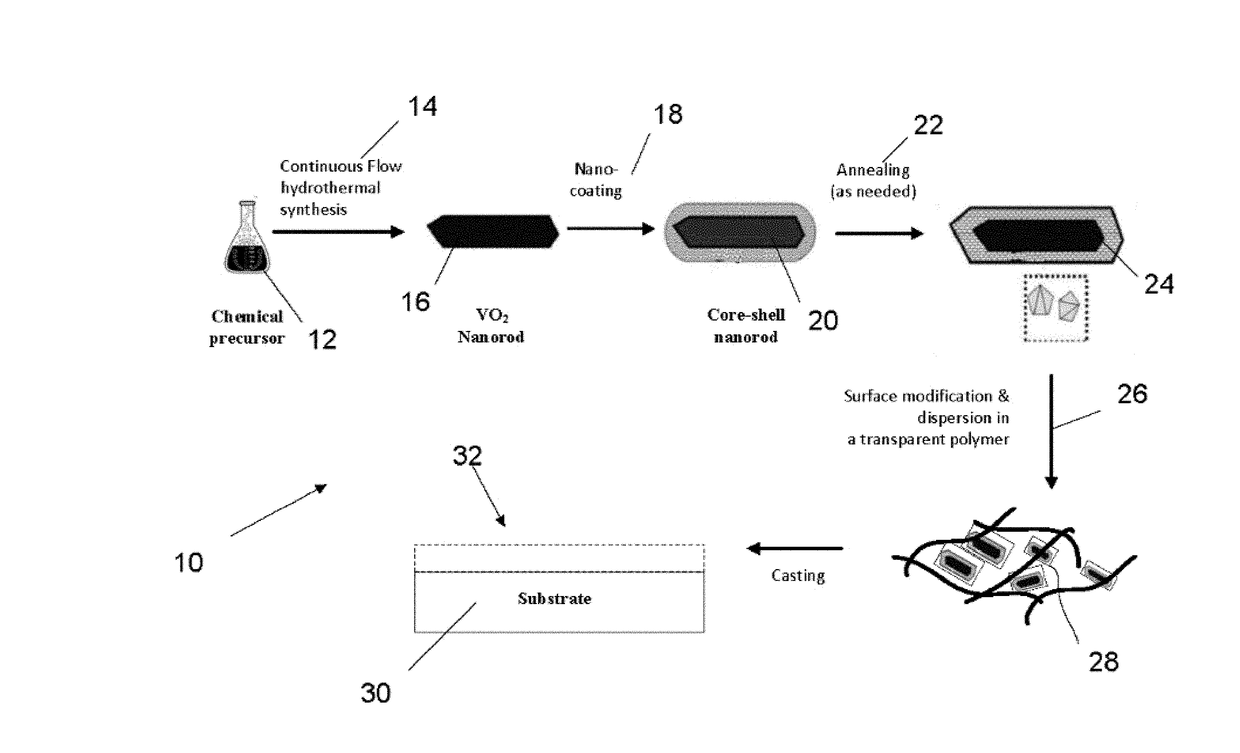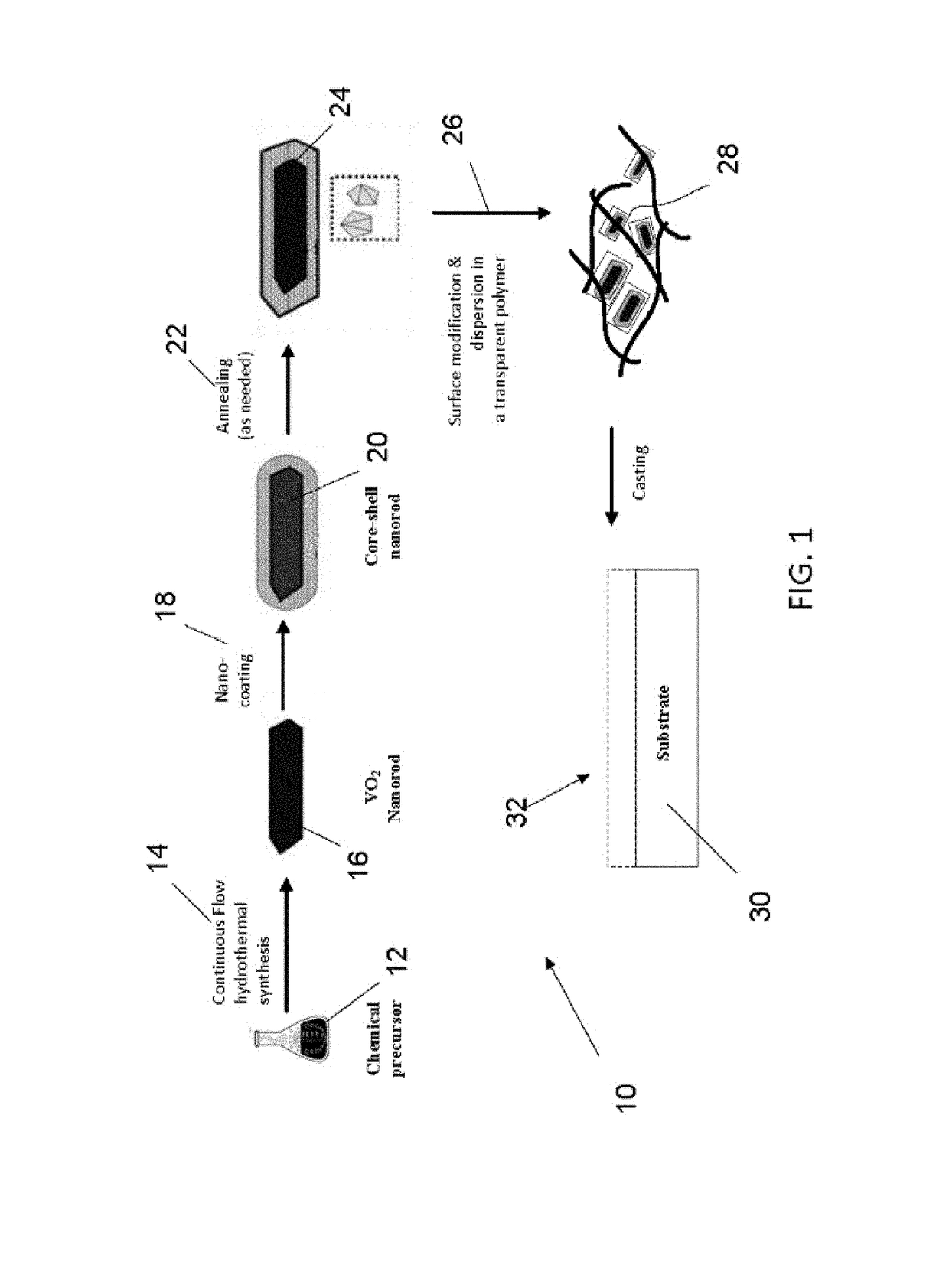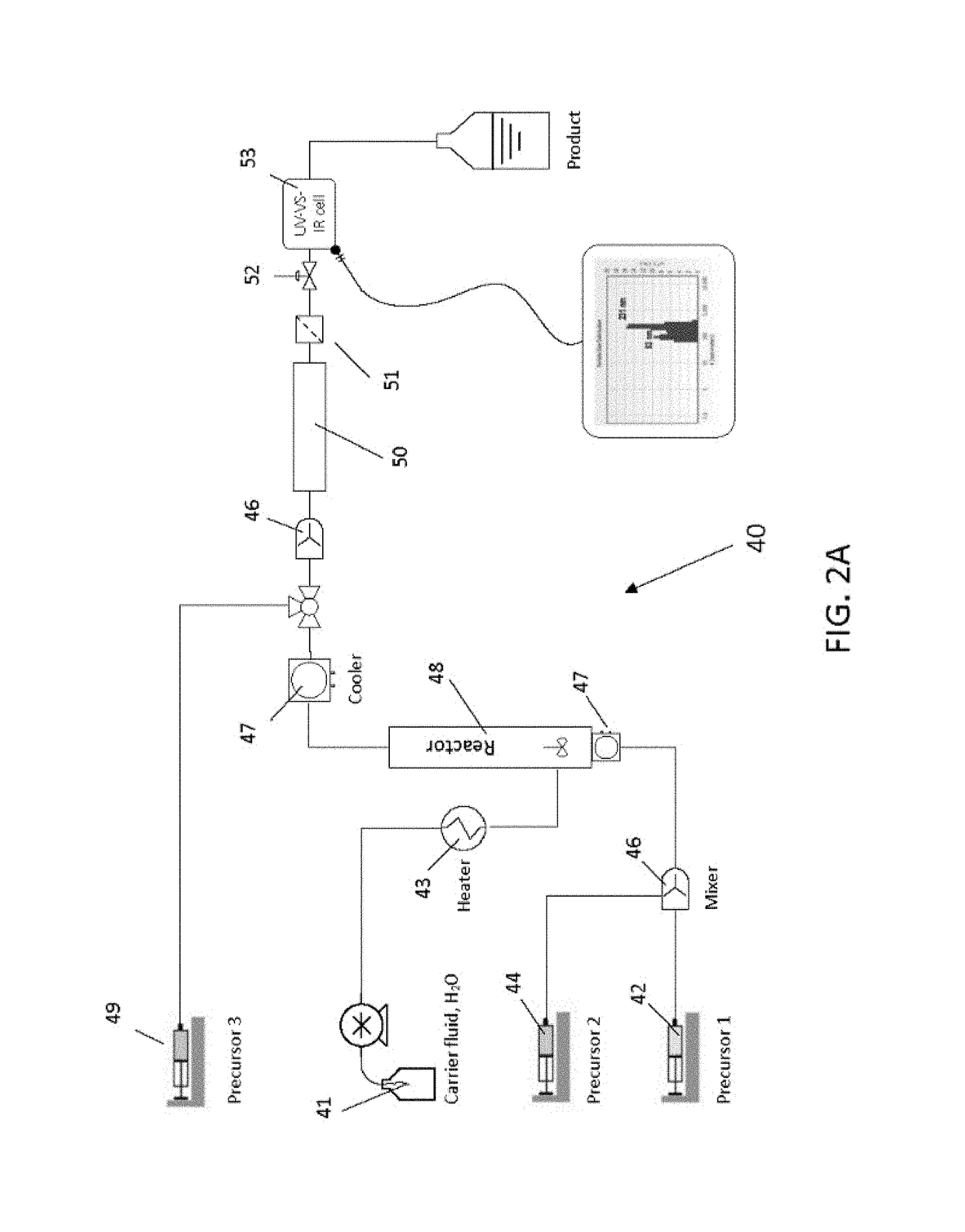Continuous flow synthesis of vo2 nanoparticles or nanorods by using a microreactor
a microreactor and nanoparticle technology, applied in glass making apparatus, manufacturing tools, coatings, etc., can solve the problems of poor control of size and phase, and achieve the effects of reducing reaction time, cost-effective optical properties, and strong surface plasmon resonance (spr)
- Summary
- Abstract
- Description
- Claims
- Application Information
AI Technical Summary
Benefits of technology
Problems solved by technology
Method used
Image
Examples
example
[0098]As an example, reaction conditions for an exemplary bench top continuous flow core-shell particle fabrication system include a dead volume of the instruments ranging from about 15 to 18 ml. For example, ⅜″ OD tubing, approximately 36 cm in length may be utilized. An HPLC pump is utilized to drive the fluids through the mixer and microreactors. A stainless steel tube reactor operated under 350° C. and 170 bar may be utilized as the flow reactor. A heat exchanger in fluid communication with the loop is utilized. Optionally, a safety relief valve is provided with a maximum pressure setting of 250 bar.
[0099]Starting material for the reaction includes 3.15 grams of V2O5, 6.255 grams of H2C2O4·2H2O and volume make up of approximately 450 ml deionized water (with a concentration of 0.0356 mol / L). Ultrasonic bath was applied to the reaction mixture for approximately 20 minutes or longer as needed under about 60° C. Typically, in a hydrothermal experimental run, 50 ml of the precursor ...
PUM
| Property | Measurement | Unit |
|---|---|---|
| temperatures | aaaaa | aaaaa |
| diameter | aaaaa | aaaaa |
| diameter | aaaaa | aaaaa |
Abstract
Description
Claims
Application Information
 Login to View More
Login to View More - R&D
- Intellectual Property
- Life Sciences
- Materials
- Tech Scout
- Unparalleled Data Quality
- Higher Quality Content
- 60% Fewer Hallucinations
Browse by: Latest US Patents, China's latest patents, Technical Efficacy Thesaurus, Application Domain, Technology Topic, Popular Technical Reports.
© 2025 PatSnap. All rights reserved.Legal|Privacy policy|Modern Slavery Act Transparency Statement|Sitemap|About US| Contact US: help@patsnap.com



